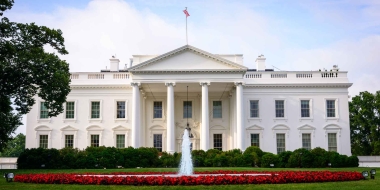Healthcare gov Continue to Enrollment Greyed Out
Open enrollment for 2023 ACA-compliant health insurance runs from November 1, 2022 to January 15, 2023 in most states.
Open enrollment for 2023 ACA-compliant health insurance runs from November 1, 2022 to January 15, 2023 in most states.
Q. What is the deadline to enroll in 2023 ACA-compliant health insurance coverage in the individual market?
A. Open enrollment for 2023 health coverage begins in nearly every state on November 1, 2022. (some exceptions: It starts on October 15 in Idaho, and on November 16 in New York. And in California, open enrollment begins November 1 but existing policyholders can begin renewing their coverage as of October 1.)
In most states, open enrollment for 2023 coverage will end on January 15, 2023.
And in most states, December 15 is the deadline to get a plan that takes effect January 1; enrollments completed in the latter half of December and the first half of January take effect February 1 instead.
Open enrollment used to end on December 15 in most states, but the Biden administration added a one-month extension that took effect for the 2022 plan year and will continue to be used from now on. This applies to the 33 states that use HealthCare.gov. The other 17 states and DC are free to follow that same schedule — most do — or set their own schedule.
What are the Obamacare open enrollment deadlines for state-run exchanges?
The states that run their own exchanges can set their own enrollment deadline, as long as it's not earlier than December 15. For 2023 coverage, as was the case for 2022 coverage, there are 18 fully state-run exchanges that have the option to set their own open enrollment schedules.
Most of these state-run exchanges choose to follow the same November 1 – January 15 schedule that HealthCare.gov uses. But some have opted for different schedules. Here are the open enrollment windows that the state-run exchanges are using for 2023 coverage (note that the deadlines sometimes change at the last minute, and we'll keep this page updated as open enrollment progresses; dates that vary from the HealthCare.gov schedule are shown in bold font):
- California: November 1 to January 31 (renewals begin October 1)
- Colorado: November 1 to January 15
- Connecticut: November 1 to January 15
- District of Columbia: November 1 to January 31 (uninsured residents can enroll anytime through the end of the COVID public health emergency)
- Idaho: October 15 to December 15 (note that this deadline is before the end of the year)
- Kentucky: November 1 to January 15
- Maine: November 1 to January 15
- Maryland: November 1 to December 15 (this deadline is before the end of the year, but MD does tend to issue last-minute extensions)
- Massachusetts: November 1 to January 23
- Minnesota: November 1 to January 15
- Nevada: November 1 to January 15
- New Jersey: November 1 to January 31
- New Mexico: November 1 to January 15
- New York: November 16 to January 31 (enrollment starts later; enrollment also open throughout COVID public health emergency)
- Pennsylvania: November 1 to January 15
- Rhode Island: November 1 to January 31
- Vermont: November 1 to January 15
- Washington: November 1 to January 15
Who can enroll in ACA-compliant health plans year-round?
Medicaid and CHIP enrollment is available year-round to eligible residents.
Year-round enrollment is also available in the Basic Health Programs in New York and Minnesota. Enrollment is also available year-round for the ConnectorCare program in Massachusetts, for people who are newly eligible or who haven't enrolled before.
Native Americans and Alaska Natives can enroll year-round in plans offered in the exchange. Applicants who are eligible for Medicaid or CHIP can also enroll year-round. This is true every year, not just in 2021.
And CMS has finalized a new rule that allows subsidy-eligible applicants with income up to 150% of the poverty level to enroll year-round, as long as the American Rescue Plan's subsidy enhancements remain in effect. The Inflation Reduction Act has extended the subsidy enhancement through 2025, so the low-income special enrollment period will also continue through 2025. This special enrollment period is optional for state-run exchanges, although several of them had already rolled it out as of early 2022.
Does Obamacare open enrollment continue through January 15 in all states?
HHS had previously defined open enrollment as the window from November 1 to December 15, but state-run exchanges have had the option to offer special enrollment periods before or after that window, in order to effectively extend open enrollment.
For coverage effective in 2022 and future years, HHS has changed the enrollment window for HealthCare.gov. It's now November 1 through January 15. But instead of requiring state-run exchanges to use an enrollment window at least that long, HHS has given them the option of keeping an earlier deadline, as long as it's not before December 15. This is why Idaho is allowed to continue to have a mid-December enrollment deadline. But all of the rest of the state-run exchanges have opted to extend their enrollment deadlines to January 15 or later.
Fully state-run exchanges are the only ones with the ability to extend open enrollment on their own (in the other states, the decision has to come from CMS, since the extension has to be issued via HealthCare.gov), and most of them have been choosing to do so each year. But now that HHS has extended the HealthCare.gov deadline to January 15 for 2022 and future years, many of the state-run exchanges are using that date rather than issuing additional extensions.
Outside of ACA's open enrollment window, enrollment's only available with a qualifying event
After open enrollment ends, people can normally only purchase coverage if they have a special enrollment period triggered by a qualifying event such as:
- Marriage (since 2017, this generally only applies if at least one spouse already had coverage before the wedding, although there are some exceptions),
- Becoming a U.S. citizen,
- Birth or adoption,
- Involuntary loss of other health coverage.
- A permanent move to an area where new health plans are available (since July 2016, this only applies in most cases if you already had coverage prior to your move).
- Here's a complete guide to qualifying events in the individual market, and their associated special enrollment periods.
Regardless of whether you purchase insurance through the exchange or off-exchange, the annual open enrollment window applies, and special enrollment periods are necessary in order to enroll at any other time of the year.
Open enrollment schedule has varied over time
Although open enrollment is now set at November 1 – January 15 in most states, it has varied quite a bit over the years. In the federally-run marketplaces, the following enrollment windows have been used (with some last-minute extensions, and with somewhat different schedules used by the state-run marketplaces):
- 2014 coverage: October 1, 2013 through March 31, 2014
- 2015 coverage: November 15, 2014 through February 15, 2015
- 2016 coverage: November 1, 2015 through January 31, 2016
- 2017 coverage: November 1, 2016 through January 31, 2017
- 2018 coverage: November 1, 2017 through December 15, 2017
- 2019 coverage: November 1, 2018 through December 15, 2018
- 2020 coverage: November 1, 2019 through December 15, 2019
- 2021 coverage: November 1, 2020 through December 15, 2020
- 2022 coverage: November 1, 2021 through January 15, 2022
- 2023 coverage: November 1, 2022 through January 15, 2023
Louise Norris is an individual health insurance broker who has been writing about health insurance and health reform since 2006. She has written dozens of opinions and educational pieces about the Affordable Care Act for healthinsurance.org. Her state health insurance marketplace updates are regularly cited by media who cover health reform and by other health insurance experts.
Related articles

How the Build Back Better legislation might affect your coverage
The Build Back Better Act is loaded with long-needed fixes to the Affordable Care Act that would continue to boost affordability of individual and family health insurance.

Why comparing coverage during open enrollment is a no-brainer
We've compiled four examples to illustrate how plan changes during open enrollment can help you come out ahead. These are real scenarios from real consumers with subsidized marketplace coverage.

Biden administration announces COVID-related special enrollment period
President Biden has signed two executive orders related to healthcare – the first to include a COVID-related special enrollment period on HealthCare.gov, for Americans who don't currently have health coverage. ...

Who can help if I have a problem with my ACA-compliant coverage or exchange enrollment?
Here's where you should look for help if have trouble enrolling through a health insurance marketplace – or if you have issues with your individual-market ACA-compliant health plan.

Four ACA open enrollment mistakes to avoid
Avoiding these four common open enrollment-period mistakes could save you some serious money.

ACA Open Enrollment 2023 Guide
Our 2023 ACA Open Enrollment Guide includes Obamacare enrollment dates and deadlines, information about changes to plans and premiums, and more.
stewartwhortiven50.blogspot.com
Source: https://www.healthinsurance.org/faqs/what-are-the-deadlines-for-the-acas-open-enrollment-period/
Post a Comment for "Healthcare gov Continue to Enrollment Greyed Out"